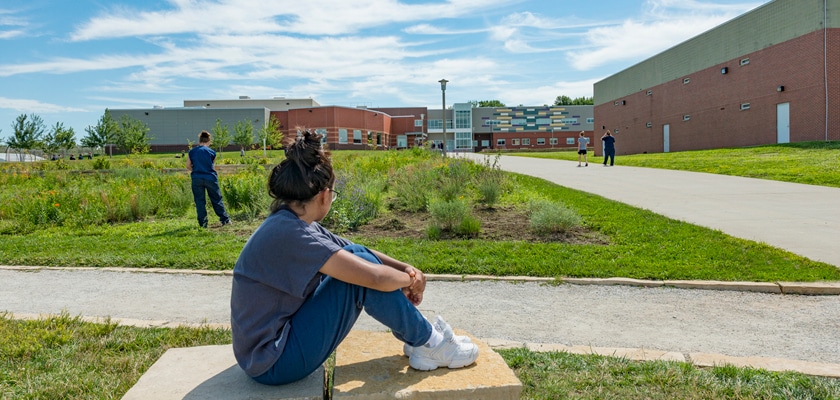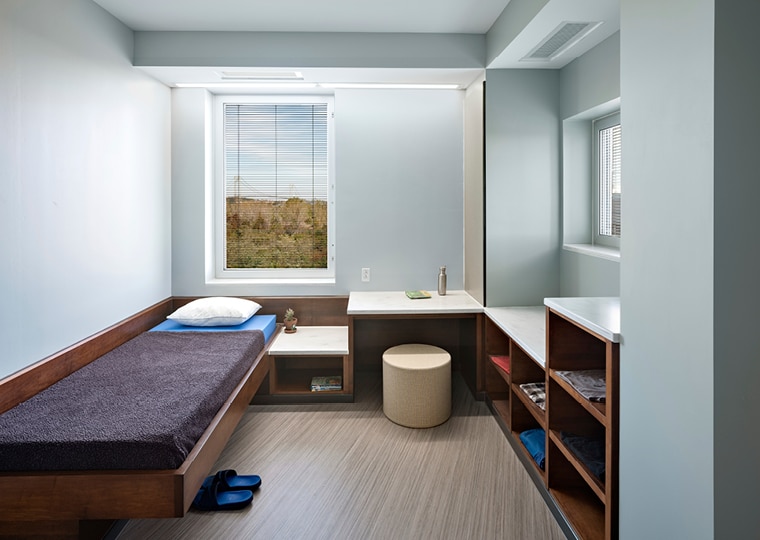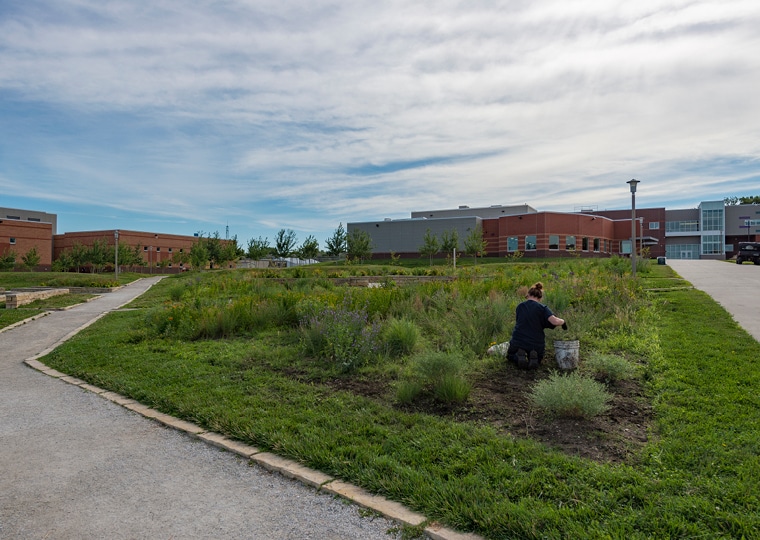
Architects are acutely aware that our surroundings have a profound impact on our mental, emotional, and physical wellbeing. A design informed by empathy and compassion — especially in spaces meant for vulnerable populations – is essential for individuals living with trauma. This includes facilities for veteran care, social services, and behavioral health, and certainly also extends to correctional facilities and detention centers.
In a recent design of a forensic psychiatric facility (where patients are diverted from correctional services for a variety of reasons) STV’s design team relocated the intake entrance, transforming the experience of admission to the facility to be both functional and uplifting. The residents’ first impression is of a serene, calm place that is respectful and focused on the human person – for the patients and for the people who work there.
To avoid retraumatizing new patients or triggering decompensation, we also created more privacy in spaces for medical assessments during patient intake, enlivened by new windows and natural light.
For secure custodial facilities, there has also been a shift in thinking to create an experience that reduces anxiety and fear that may cue aggressive or defensive behaviors. This shift might include designing along gender-specific principles, access to daylight and views to nature, outdoor visitation spaces, and enhanced recreational spaces. Staff are trained to be courteous and respectful to new people in custody, assuring them that normal behavior is not only expected, but rewarded with a dignified, normative experience.
Currently, we are helping to pilot a design for a “three-door jail” that incorporates social services for housing, treatment, and other alternatives to incarceration. While still in its early planning stages, our design will include a detention and deflection area outside of the secure perimeter, where people who are brought in by first responders can be given access to supportive services, including a sobering center, and, where appropriate, released without a new arrest record as part of the deflection program.
This facility will also house a diversion program where individuals are given the option of completing a program in lieu of incarceration, keeping them free of a criminal charge and redirecting them onto a more positive path long-term. Our design for the diversion program’s reporting center will include spaces for group therapy, training, etc. – much like a community center, available on a Day Reporting outpatient basis.
The third door of the “three-door jail” would be the actual jail facility, which will include a robust behavioral health and medical health facility designed for trauma-informed and gender-specific needs. Once complete, this design will encompass a 17-acre site that was formerly occupied by a now demolished nineteenth-century jail.
The project team’s hope is that this design can act as a beacon for the community and serve as a successful model that can be replicated nationwide. With our design, we intend to employ evidence-based, restorative practices to those who come to the facility and have assembled a stellar roster of expert practitioners to inform our design.
The aim of trauma-informed design is to promote a sense of calm, safety, and dignity for all occupants, with the recognition that the adverse experiences of those in crisis affect their interpretation of their daily life. Deliberate choices in clear spatial layouts, abundant daylight, and the presence of natural materials result in humane, intentionally designed spaces to assist the complex journey of healing from trauma. It all starts at the front door.

Frank Greene, FAIA OAA, is an STV vice president and architecture chief. He has more than 40 years in the justice industry and is a leader in the courts and corrections field across North America. He is an active member of the American Institute of Architects Academy of Architecture for Justice (AIA AAJ), a founder of the AIA AAJ’s New York City chapter, and past chair of its national Knowledge Community. He also conceived the Sustainable Justice initiative of the AIA AAJ, intended to link sustainability thinking with design excellence, enabling the justice system to contribute to the environmental soundness of the communities it serves.






